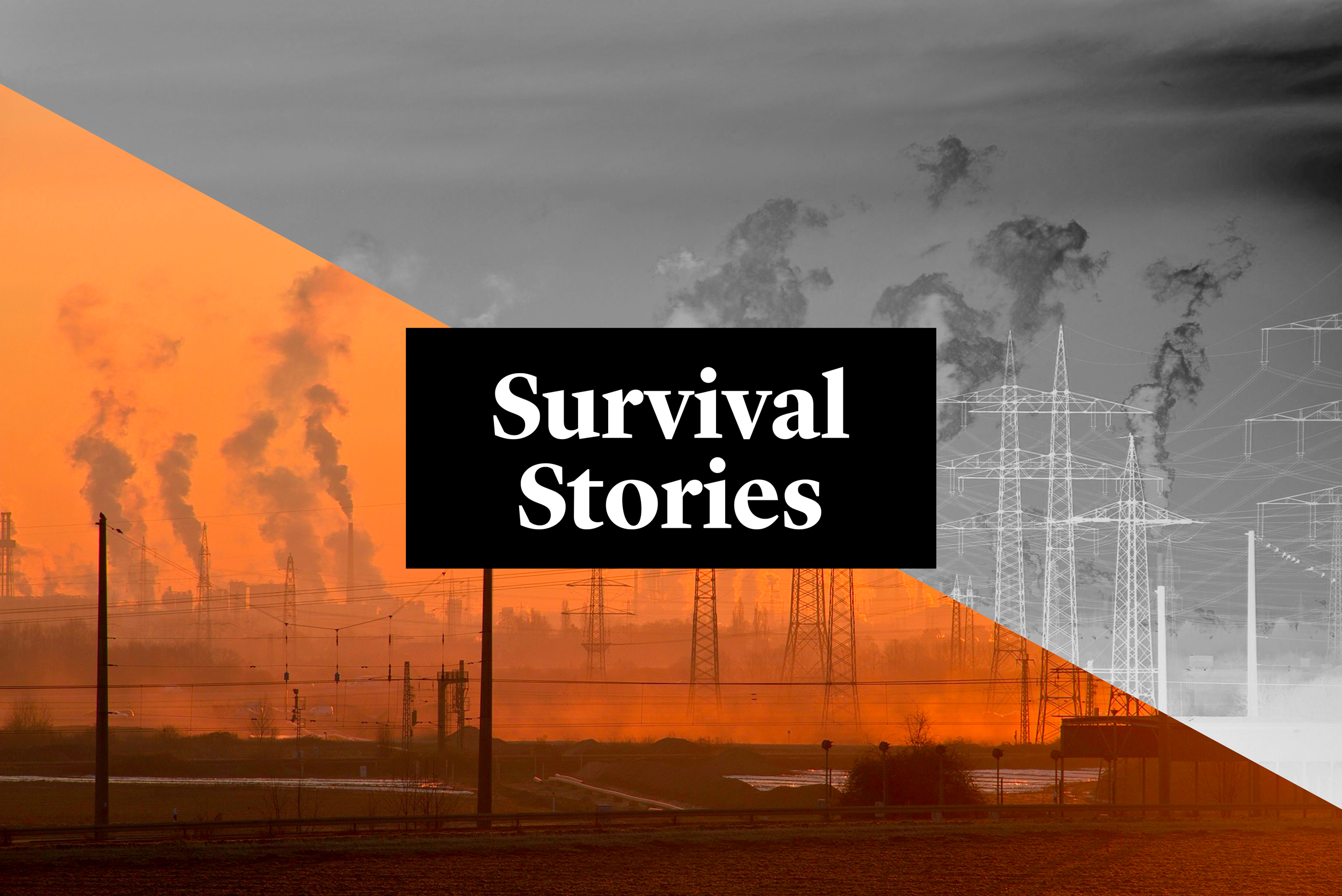Read Survival Stories from around the country.
Climate change eludes easy coverage. The impact of global warming looks different in every community; so do the human factors that raise the Earth’s temperature. “Nature, we believe, takes forever,” journalist Bill McKibben wrote in 1989’s The End of Nature, before he explained how that belief misleads us:
Our sense of an unlimited future, which is drawn from that apparently bottomless well of the past, is a delusion….Over a lifetime or a decade or a year, big and impersonal and dramatic changes can take place. We have accepted the idea that continents can drift in the course of aeons, or that continents can die in a nuclear second. But normal time seems to us immune from such huge changes. It isn’t, though.”
Journalists attempt to explain, if not to convince. But climate change too often confounds our attempts. Scientific language is too specialized. We shy away from complicated topics; last year, evening newscasts from four major broadcasters spent less than an hour discussing climate change. When wildfires rage and hurricanes churn, we struggle to link them to our behaviors and our policies. The impacts of climate change look different in Wyoming coal country than they do on the Gulf Coast.
In October 2016, the Pew Research Center detailed how our political differences “reach across every dimension of the climate debate”—including how the news media covers it. One month later, the election of Donald Trump to the nation’s highest office revealed how little journalists know about the local circumstances that shape our politics. Those same circumstances—economic, geographic, cultural, and historical—inform our understanding of climate change, and what we think we might do to prevent its most destructive effects.
The New York Times recently invited its readers to try their hands at budgeting the Earth’s carbon emissions. With help from Climate Interactive and MIT’s Sloane School of Management, the Times published a climate simulator in August—sandwiched between news of America’s planned exit from the Paris climate accords and the EPA’s decision to repeal the Clean Power Plan.
The simulator challenges users to “prevent the worst effects of global warming” by manipulating emission levels in developed and developing countries. It renders Earth’s projected carbon emissions as hundreds of small, jittering dots, many of which stand in for the practices and policies of communities across the United States. Click “reduce” or “eliminate,” and a number of dots vanish from the screen.
The Times simulator is a useful way to quantify America’s environmental impact. But it reveals nothing about the local forces behind our contributions to a changing climate. If we eliminate one jittering dot, then we reshape dozens of American communities. If we do nothing, then rising temperatures will continue to reshape them for us.
CJR recently invited contributions from journalists around the country whose coverage of climate change is rooted in state and local concerns. (Our first dispatch, from Cassandra Willyard in Wisconsin, can be found here.) We asked each journalist to revisit their work and to detail those lessons they learned while reporting. During the next several weeks, CJR will publish their dispatches, with the hope that other reporters might find new ways to apply the lessons they include.
Survival Stories is a series of local climate change dispatches.
Brendan Fitzgerald is senior editor of CJR.


